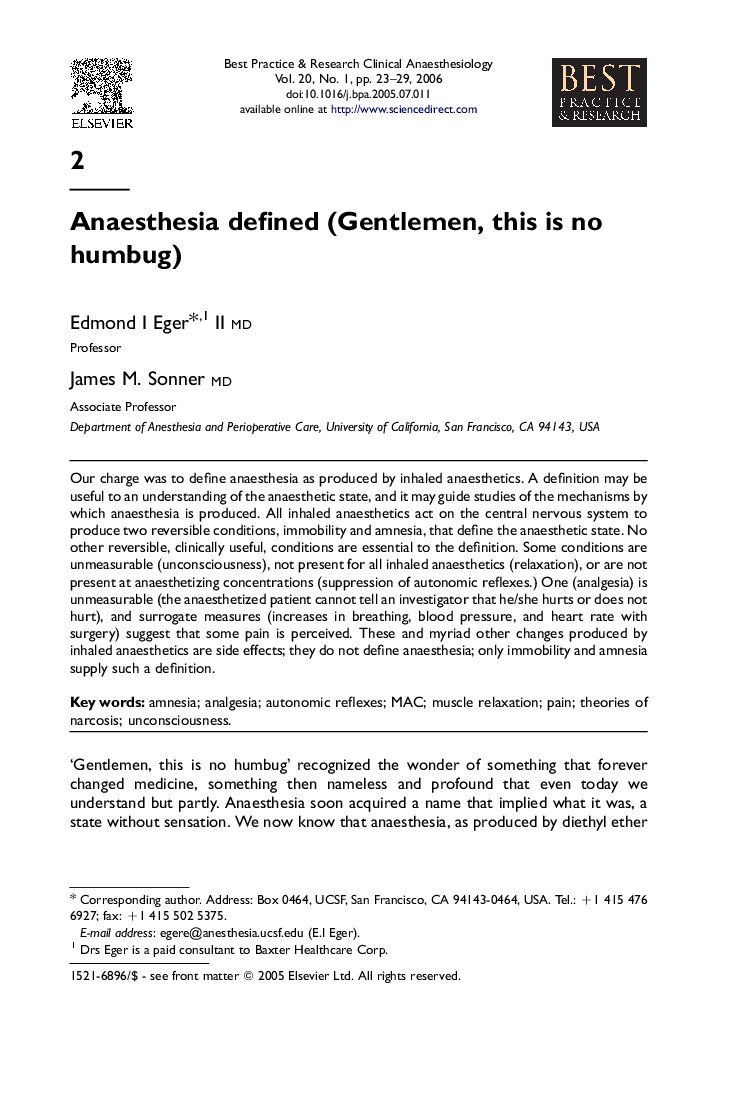| Article ID | Journal | Published Year | Pages | File Type |
|---|---|---|---|---|
| 2748928 | Best Practice & Research Clinical Anaesthesiology | 2006 | 7 Pages |
Our charge was to define anaesthesia as produced by inhaled anaesthetics. A definition may be useful to an understanding of the anaesthetic state, and it may guide studies of the mechanisms by which anaesthesia is produced. All inhaled anaesthetics act on the central nervous system to produce two reversible conditions, immobility and amnesia, that define the anaesthetic state. No other reversible, clinically useful, conditions are essential to the definition. Some conditions are unmeasurable (unconsciousness), not present for all inhaled anaesthetics (relaxation), or are not present at anaesthetizing concentrations (suppression of autonomic reflexes.) One (analgesia) is unmeasurable (the anaesthetized patient cannot tell an investigator that he/she hurts or does not hurt), and surrogate measures (increases in breathing, blood pressure, and heart rate with surgery) suggest that some pain is perceived. These and myriad other changes produced by inhaled anaesthetics are side effects; they do not define anaesthesia; only immobility and amnesia supply such a definition.
